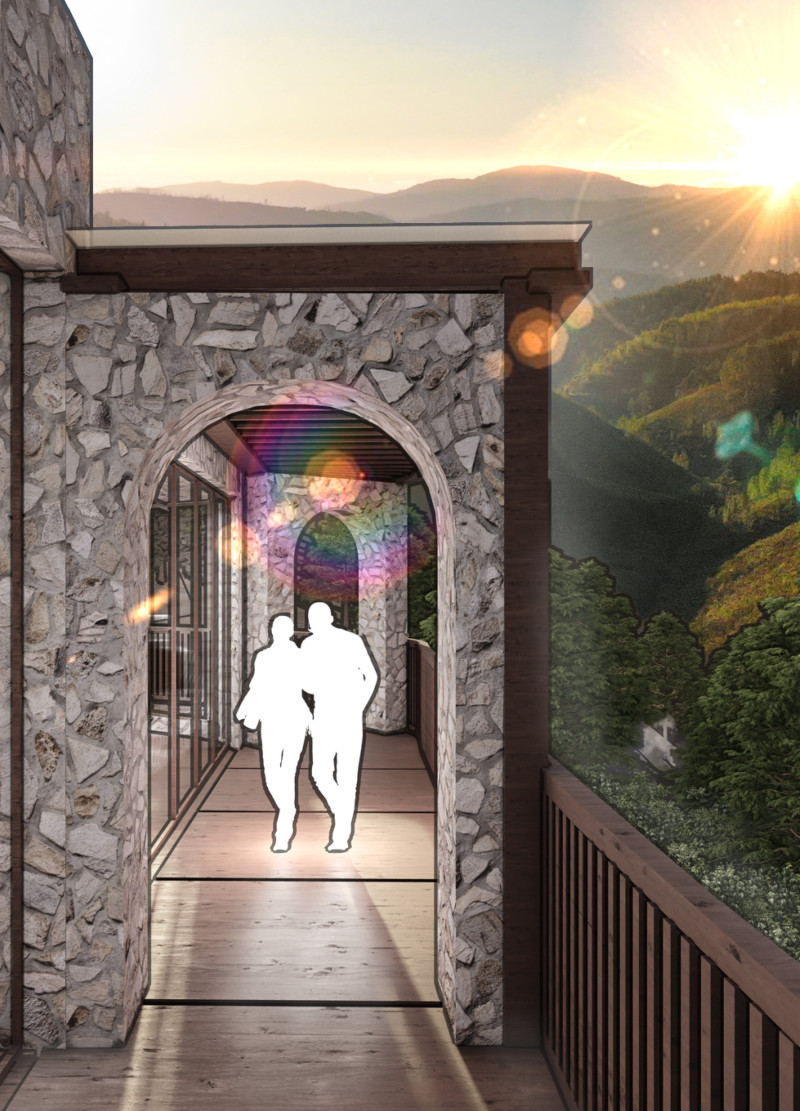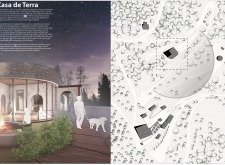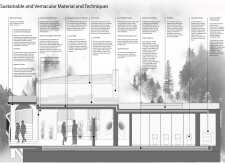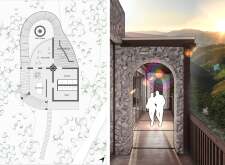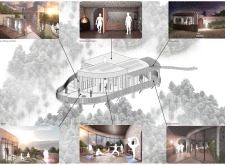5 key facts about this project
Unique Design Approaches and Materials
A key feature of Casa de Terra is its organic form, which embraces the natural contours of the site. This design principle not only enhances aesthetic appeal but also facilitates natural ventilation and daylighting, optimizing energy efficiency. The use of local timber for structural components demonstrates a clear intention to minimize transportation emissions and support the regional economy. Additionally, the incorporation of silt stone offers thermal mass, allowing the building to maintain stable indoor temperatures, reducing reliance on mechanical heating and cooling systems.
Rainwater harvesting systems illustrate the project's approach to water management, directing collected rainwater for reuse in irrigation and sanitation. The design includes green roofs and walls, promoting biodiversity and enhancing insulation while integrating plant life into the building’s fabric. Pergolas strategically placed around communal spaces provide shade and define outdoor areas, further bridging the gap between the interior and exterior environments.
Sustainable Features and Functionality
Casa de Terra's main spaces consist of a yoga studio, communal kitchen, and gathering areas, all designed to foster connection among users. Large, double-glazed windows facilitate unobstructed views of the surrounding landscape, enhancing the experience of tranquility. The yoga studio, positioned at the center of the structure, serves as a focal point, promoting both physical and mental health.
Innovative ventilation strategies are employed throughout the project, ensuring airflow consistency without mechanical assistance. This attribute aligns with the overarching objective to encourage occupant engagement with the natural environment. By prioritizing natural lighting and passive climate control, Casa de Terra exemplifies the potential of architecture to contribute to wellbeing while maintaining ecological balance.
To explore more about the architectural plans, sections, designs, and ideas behind Casa de Terra, interested readers are encouraged to delve deeper into the project presentation for comprehensive details and insights.


